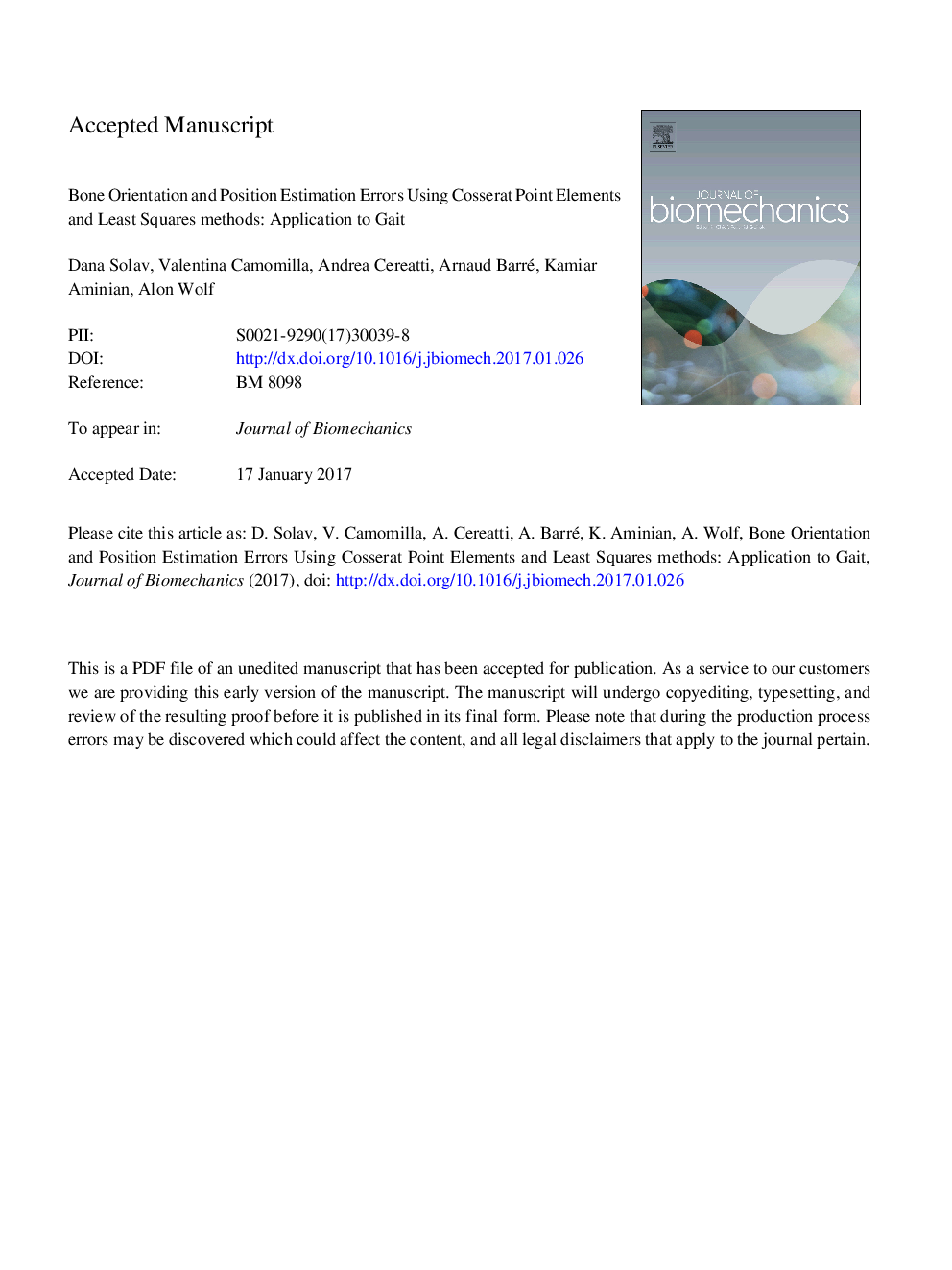| Article ID | Journal | Published Year | Pages | File Type |
|---|---|---|---|---|
| 5031894 | Journal of Biomechanics | 2017 | 17 Pages |
Abstract
The aim of this study was to analyze the accuracy of bone pose estimation based on sub-clusters of three skin-markers characterized by triangular Cosserat point elements (TCPEs) and to evaluate the capability of four instantaneous physical parameters, which can be measured non-invasively in vivo, to identify the most accurate TCPEs. Moreover, TCPE pose estimations were compared with the estimations of two least squares minimization methods applied to the cluster of all markers, using rigid body (RBLS) and homogeneous deformation (HDLS) assumptions. Analysis was performed on previously collected in vivo treadmill gait data composed of simultaneous measurements of the gold-standard bone pose by bi-plane fluoroscopy tracking the subjects' knee prosthesis and a stereophotogrammetric system tracking skin-markers affected by soft tissue artifact. Femur orientation and position errors estimated from skin-marker clusters were computed for 18 subjects using clusters of up to 35 markers. Results based on gold-standard data revealed that instantaneous subsets of TCPEs exist which estimate the femur pose with reasonable accuracy (median root mean square error during stance/swing: 1.4/2.8Â deg for orientation, 1.5/4.2Â mm for position). A non-invasive and instantaneous criteria to select accurate TCPEs for pose estimation (4.8/7.3Â deg, 5.8/12.3Â mm), was compared with RBLS (4.3/6.6Â deg, 6.9/16.6Â mm) and HDLS (4.6/7.6Â deg, 6.7/12.5Â mm). Accounting for homogeneous deformation, using HDLS or selected TCPEs, yielded more accurate position estimations than RBLS method, which, conversely, yielded more accurate orientation estimations. Further investigation is required to devise effective criteria for cluster selection that could represent a significant improvement in bone pose estimation accuracy.
Related Topics
Physical Sciences and Engineering
Engineering
Biomedical Engineering
Authors
Dana Solav, Valentina Camomilla, Andrea Cereatti, Arnaud Barré, Kamiar Aminian, Alon Wolf,
